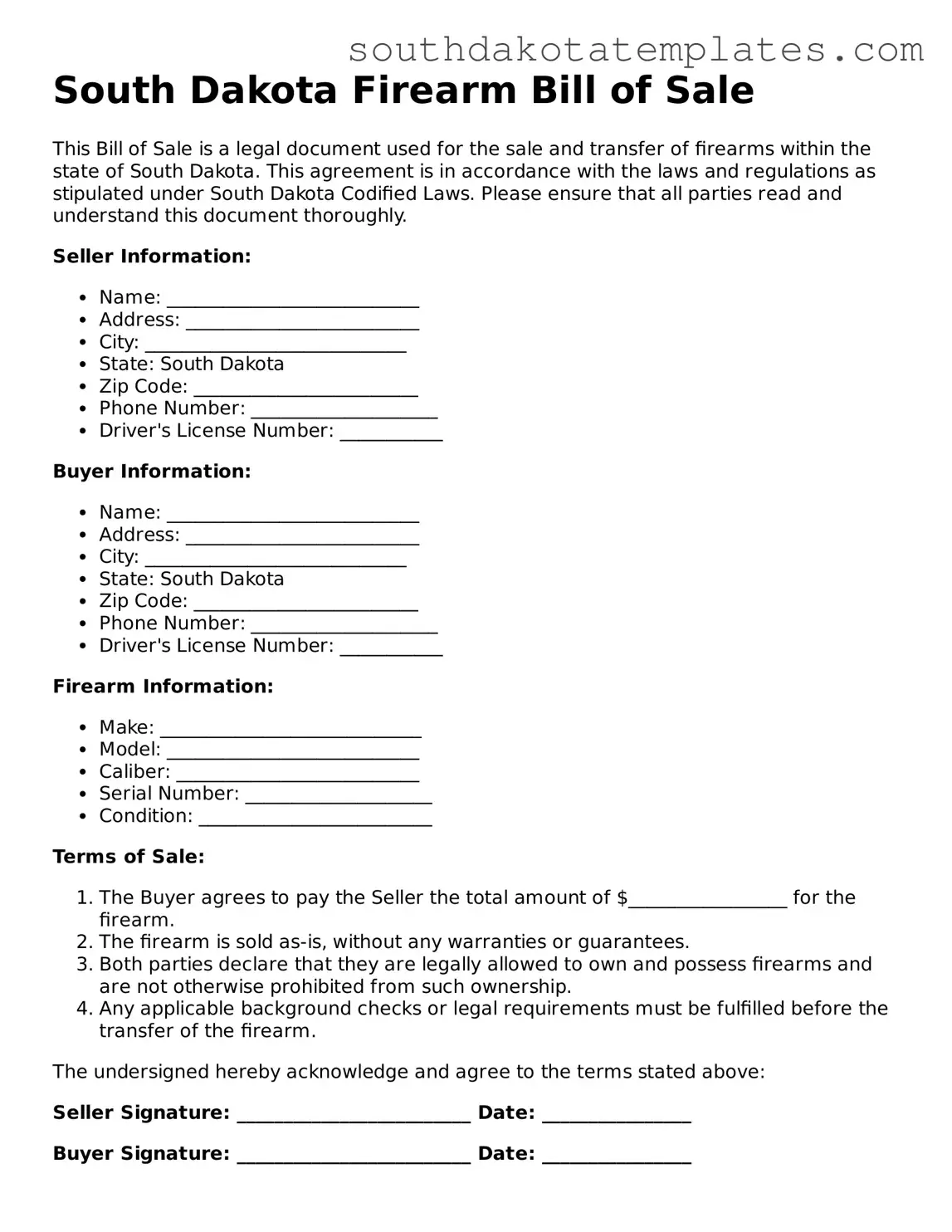Free South Dakota Firearm Bill of Sale Document
The South Dakota Firearm Bill of Sale form is a legal document that records the sale and transfer of firearms between individuals. This form ensures that both the buyer and seller have a clear understanding of the transaction, providing essential details about the firearm and the parties involved. To facilitate a smooth transfer, consider filling out the form by clicking the button below.
Get Firearm Bill of Sale
